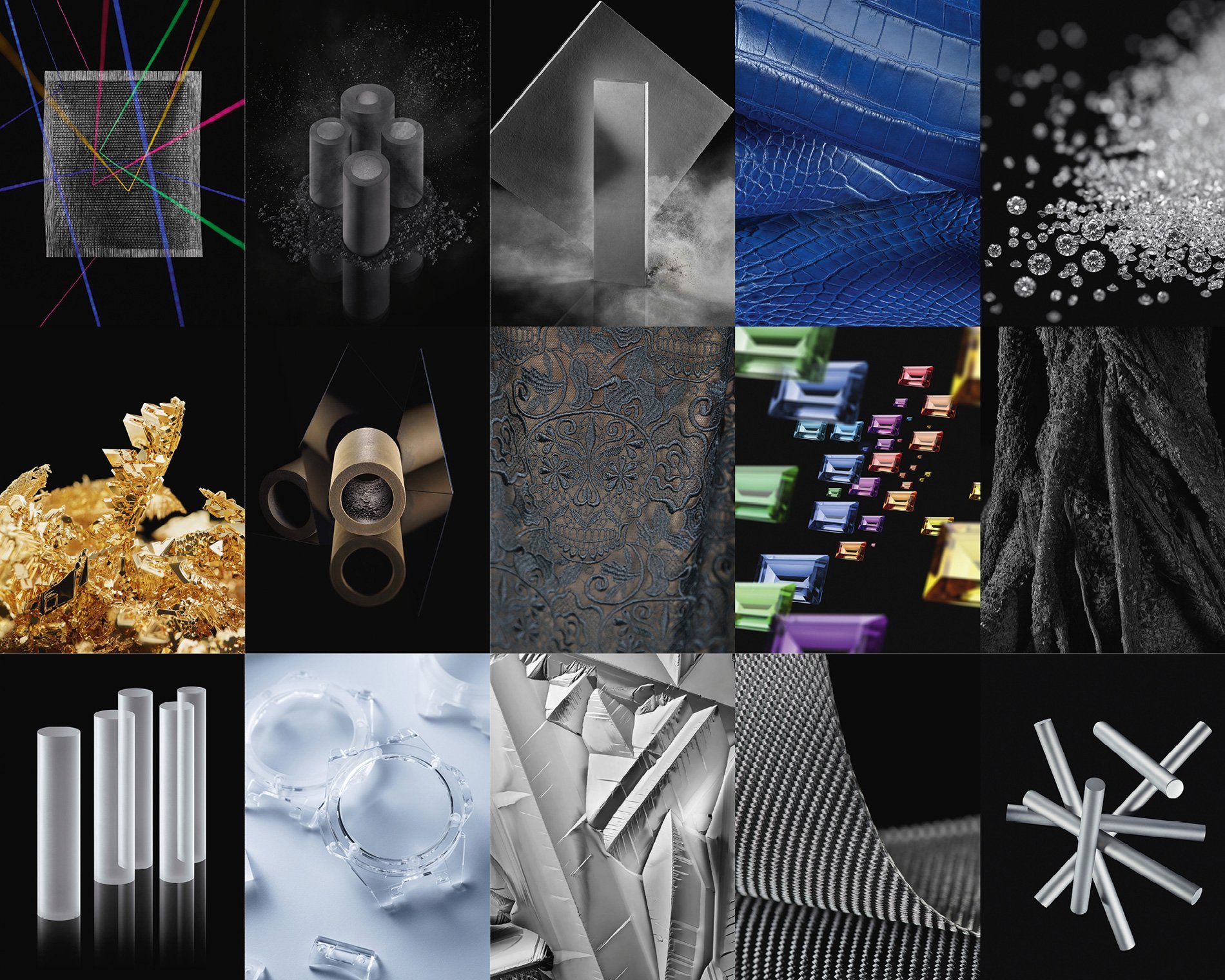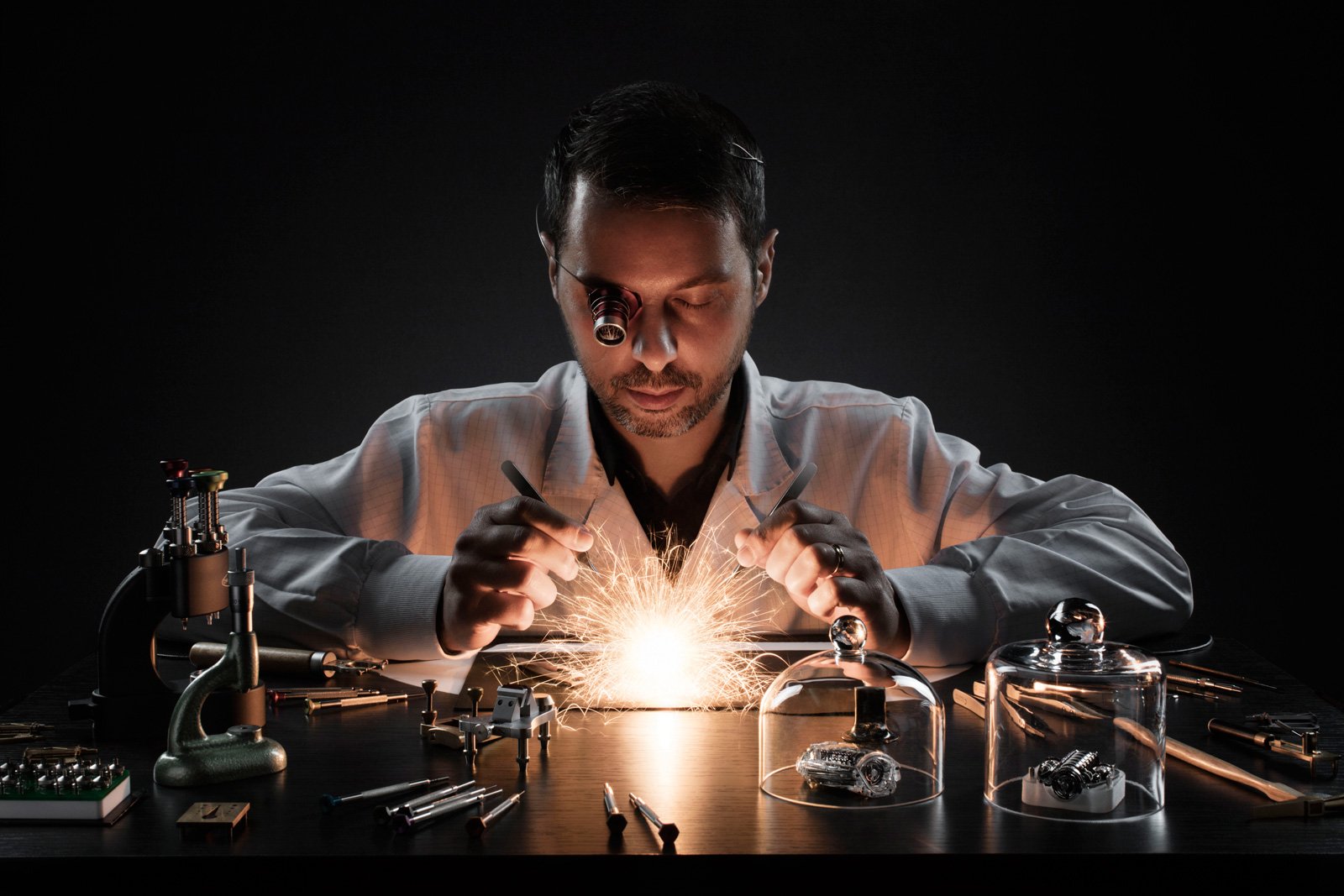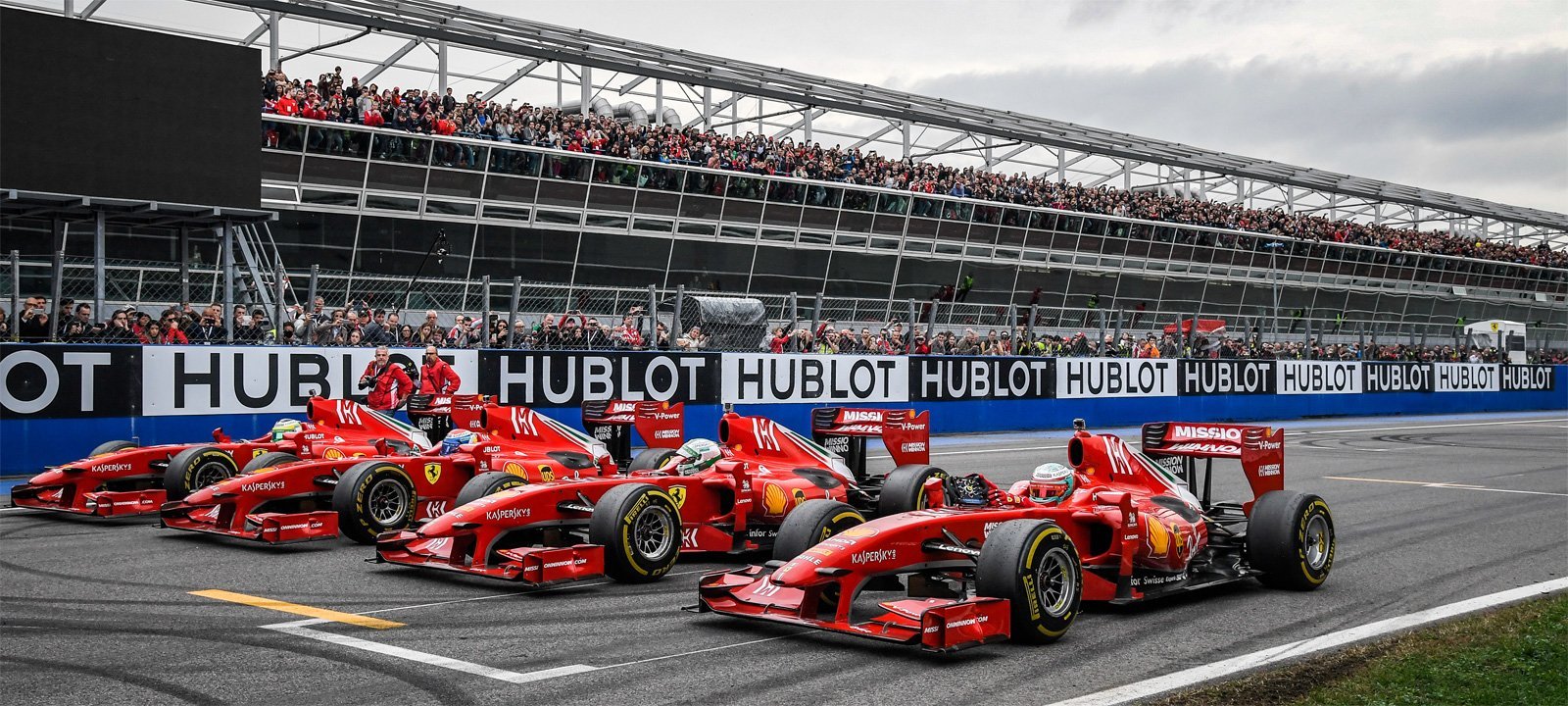hen you think of Hublot, one word immediately comes to mind: “fusion”. While it applies to Hublot’s watch production, might it not also apply to your relationship with Jean-Claude Biver?
It’s true that I first met him in 1994 – I was under 30 at the time – and we’ve been together ever since. First at Blancpain, where I ended up as number 2, then at Omega, and again, 10 years later, in 2004, as part of the Hublot venture. If I were to sum up our relationship, I’d say that Jean-Claude provides the inspiration and I’m the product man. In fact, that’s how I started: as product manager with Bulgari. From a strictly watchmaking point of view, it wasn’t the giant we know today. And that was lucky for me. During the seven years I spent there, I tried my hand at every aspect of the trade – design, production, supplies, building a distribution network, marketing, and so on. Everything was centred on the product, for which all those aspects have to be considered.
Then came your encounter with Jean-Claude Biver...
I first met him 1994. He’d sold Blancpain to the Swatch Group two years previously. Everything had to be rebuilt from scratch, on the basis of new criteria. It was an exciting experience, next to a man with the powers of persuasion everybody is familiar with. I had no regrets, far from it. At Blancpain, I’d learned a tremendous amount about movements from the technical point of view, as well as about design, development and production.
“If I were to sum up our relationship, I’d say that Jean-Claude provides the inspiration and I’m the product man.”
At each stage, it seems you expanded your range of skills through hands-on experience.
Yes, I left Blancpain in 2001. I’d been offered a chance to enter a whole new sphere of work – the world of the fashion watch, about which I knew nothing, developing and establishing a franchise brand, Leonard. A completely different segment of watchmaking.
-

- © Europa Star 6/2002
Then in 2004 you got a phone call from Jean-Claude Biver – and you could say it started all over again.
Jean-Claude had just taken over the helm at Hublot, shouldering the proprietor Carlo Crocco who was thinking of gradually distancing himself from his company. The potential for development was huge. Biver immediately summed it up with the well-known phrase, the famous “fusion” that encapsulates what we are and that we’re still pursuing.
-

- © Europa Star 6/2004
DELVING INTO THE BRAND DNA
-

- © Europa Star 2/1980
That avenue of exploration, the fusion of materials, wasn’t actually a new invention. It was inscribed in the brand’s DNA since Carlo Crocco had dared – sacrilege at the time – to combine gold and rubber. And vanilla-perfumed to boot!
All we did was delve deeper and take the idea of exploring the question of material as far as possible. It’s an infinite source of creativity. Hublot fused with the idea of fusion. And the ideas stem from this work, the impetus offered by materials themselves –by the materials and also the blends of materials, brightly coloured ceramics, sapphire, Magic Gold, and also concrete, embroidery, silicon, stones, to cite just a few examples.
“All we did was delve deeper and take the idea of exploring the question of material as far as possible. It’s an infinite source of creativity. Hublot fused with the idea of fusion.”

We can imagine that working like this with materials involves major investment in research and development...
About 40 people work in our R&D departments. R&D is essential when you start working with different materials, new materials, or materials you’ve created. And R&D in materials is indissociable from R&D not only in design, but also – and how! – in movement technology. When you’re looking to reinvent the container, you also reinvent the content. And vice-versa. In basic research, you launch 15 to 20 projects to select just one. Often, you’re advancing in virgin territory, and we’ve sometimes had to abandon certain leads, even though they looked promising.
-

- One of the characteristic materials developed by Hublot is its famous “Magic Gold”.
What leads are you pursuing today?
Basically we no longer use steel, but instead grade-5 titanium. Apart from that, we’ve done a huge amount of work with ceramics, positioning them in the top range. While exploring black ceramics, we created the All Black concept. We now have the in-house skills to work with bright red ceramics and we’re developing a whole palette of other bright colours, which is still extremely challenging. To do so, we’ve developed a ceramic sintering process which is secret and has been duly patented. To give you an idea of just how challenging it is, for the moment we can only produce around 200 items a year. But we’re at an intermediate phase on the path to industrialisation. We’re also working on bright yellow and bright orange.
“We now have the in-house skills to work with bright red ceramics and we’re developing a whole palette of other bright colours, which is still extremely challenging.”
-

- Classic Fusion Aerofusion Chronograph Orlinski
Sapphire is another field you’re exploring...
We have literally invested millions in the highly complex and challenging technological process of working with sapphire. Its transparency has enabled us to create new designs that match the qualities peculiar to it. We’re only able to produce 50 a year. And to do that, we’re forced to work with companies with the requisite skills, and they are located not in Switzerland, but in Japan, for the most part, or South Korea. Although all the development takes place here, we’re obliged to work with them at the manufacturing stage.
After having worked with transparent sapphire, we’ve now introduced colours – smoky black, red, blue, and now yellow, the result of a mixture of copper and aluminium oxide, but which is still just as transparent and scratch-resistant. Today, we’re also working with blends – fusions – of ceramics and metal, hard platinum, hard aluminium, 3D carbon (a 2D weave with the addition of a third, vertical thread), and exploring any number of other avenues.
“Today, we’re also working with blends – fusions – of ceramics and metal, hard platinum, hard aluminium, 3D carbon (a 2D weave with the addition of a third, vertical thread).”
-

- Hublot case in yellow sapphire

FOLLOW THE MOVEMENT
People talk a lot about the watch exteriors, but what about the movement? Is there any kind of “fusion” there too??
In 2010, shortly after Hublot was bought out by LVMH (in 2008: Ed.), we “repatriated” Mathias Buttet, so to speak, who at that time headed up the movement manufacturer BNB. We were his biggest customer, but BNB was in trouble. So he decided to come back to Hublot and brought around thirty watchmakers with him. Starting with that strong, expert core, we set out to design and create our own movements. With the aim of reinventing them.
-

- © Europa Star 3/2010
Besides a large number of hugely innovative complications, we produced our own basic movements suited to our own specific requirements: Unico, a chronograph the mechanism of which is designed for dials that are open-worked to showcase the movement, and the Meca-10, a hand-wound movement with an exceptional power reserve of 10 days, the formal concept of which was inspired by Meccano. The idea was to carry design right into the very interior of the movement. Another kind of fusion.
-

- Hublot Tourbillon Bi-Axis
-

- Big Bang Unico 42 mm
-

- Big Bang Meca-10
THE BIG BANG AND THE RISK OF THE “MONOPRODUCT”
-

- Big Bang Unico Sapphire All Black Galaxy
On the strength of its brazen success, the Big Bang has come to symbolise the Hublot brand per se. Don’t you see an inherent risk in this situation? Because the day when the Big Bang falls out of phase with consumer trends, Hublot is going to have to reinvent itself again.
It’s in the nature of the Big Bang to constantly evolve. There is no one Big Bang, not even ten Big Bangs, but hundreds of variations suited to all kinds of profiles, all very different from one another. The Big Bang is a galaxy. That said, we’re already working on evolutions. Take the Classic Fusion family, for example, especially the latest Classic Fusion Ferrari. That’s very different. And it’s opening other doors to us.
-

- Classic Fusion Ferrari GT King Gold
Hublot is now an established brand and one of the great Swiss watch brands. And the new products represent only 15% to 20% of our sales. So around 80% of our sales are in our core range. But it’s that 20% of slightly “crazy” watches that monopolise 90% of the promotional work. Because they’re the ones that get people dreaming.
“It’s that 20% of slightly “crazy” watches that monopolise 90% of the promotional work. Because they’re the ones that get people dreaming.”
And who are these people who dream of Hublot?
Our target audience is made up mainly of young people in the 20-40 age bracket. The over-50s represent only around 12% of our customer base which, by the way, breaks down into 75% men and 25% women. They’re mainly entrepreneurs – restaurant owners, traders, architects and so on –working people. Not people who live on their annuities, no “old money”.
FUSIONAL MARKETING
-

- Assistant referee Bjarn Kuipers raising the Hublot watch during the World Cup in Russia in 2018. On his wrist, a smartwatch by the brand.
Hublot has become omnipresent in a short time. You get the impression of a buzz of activity in all directions and multiple fields – sport, street art, cuisine, tattooing. And of course football too springs to mind.
Football was the key to Hublot’s world fame. In 2004, no one had heard of us. We had to make a big splash. The brilliant idea was to take an interest in football, a domain where no watchmaker had ever dared set foot before. Things have changed a lot since then (laughs). The most brilliant idea of all was to suggest to FIFA that we occupy the referee board and give it the shape of a watch, because the name Hublot meant nothing to lots of people. It could have been anything, a bank, an insurance company.
We calculated that during the last World Cup, we had 21 minutes of full-on visibility, the equivalent of 200 million francs’ worth of advertising! And the people who saw it numbered not millions, but billions. It was a phenomenal name recognition booster. Besides which, the players themselves are huge watch buyers. And their fans follow. Lastly, we let our customers experience the World Cup live by inviting them to it – more than 1,000 during the last World Cup. Football is hugely popular and the experience inside the stadium is unique.
“Football was the key to Hublot’s world fame. In 2004, no one had heard of us.”

A more classic watchmaker choice: motorsports, with Ferrari.
We’re certainly not the first to take an interest in motorsports, but we’ve been working with Ferrari for seven years now. We have a close bond. It’s more prestigious than football, but it also has a more limited audience. Ferrari sells only 8,000 cars a year. Besides sport, we’re also present on the music scene, notably with two world tours: with Depeche Mode, and at the other end of the spectrum, with the Chinese pianist Lang, a classical musician with a very rock ‘n roll personality, which is exactly right for Hublot.
“We calculated that during the last World Cup, we had 21 minutes of full-on visibility, the equivalent of 200 million francs’ worth of advertising!”
We also work with numerous artists, especially street artists, renowned chefs, and so on. It’s impossible to name all of them. But the most important thing is that these various partnerships supply us with ideas for our products. To cite one example: our partnership with the artist Richard Orlinski, who designed models for us, has been incredibly successful. We’ve sold millions of watches over three to four years.
-

- At Only Watch 2019, Hublot showcased a sapphire watch designed by Richard Orlinski, held high by one of his famous sculptures.

VINTAGE, PRE-OWNED AND SMARTWATCHES
You get the impression that today, Swiss watchmaking is having to confront as many ruptures as there are new trends: the rapid rise of smartwatches, the growing market for pre-owned watches, the fashion for vintage watches – the list goes on.
You have to move with the times but not follow trends. Just the opposite, you have to be the trend leader and develop that trend in line with the times. That’s why I’m against vintage watches. Every watch brand should be. I can’t see the point in reproducing old watches, repeating what has already been done. In my view, the fashion for vintage watches is a bubble. Prices are already tumbling. And in any case, even if we wanted to do it, we don’t have enough history behind us.
“In my view, the fashion for vintage watches is a bubble. Prices are already tumbling. And in any case, even if we wanted to do it, we don’t have enough history behind us.”

And pre-owned?
You know, the watch market is worth 50 billion francs at retail price, and pre-owned 5 billion francs. It’s not negligible, but 10% is not hugely significant. Organising the second-hand market, structuring it efficiently, okay, but promoting pre-owned (and it’s often a grey area), no. Moreover, not everyone is jumping on the bandwagon. Some big retailers are firmly against it. And commercially, the profit margins are much smaller.
“The watch market is worth 50 billion francs at retail price, and pre-owned 5 billion francs. At 10%, it’s not hugely significant. Organising the second-hand market, structuring it efficiently, okay, but promoting pre-owned (and it’s often a grey area), no.”
And what about the smartwatch floodwave?
We’re going to make smartwatches. In fact we already have done. In 2018, for example, with our smartwatch dedicated to football referees. We made 2,000 costing 5,000 francs each. Sold out. In 2020 we’re going to issue a new one, with a football app. That’s probably just a start. We believe there’s a niche for luxury smartwatches. But only on condition that you give them high added value in terms of design and materials, as well as exclusive applications.
“In 2020 we’re going to issue a new smartwatch, with a football app. That’s probably just a start. There’s a niche for luxury smartwatches.”
-

- The Big Bang Referee FIFA World Cup Russia 2018

























































